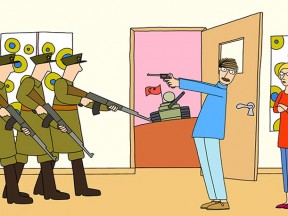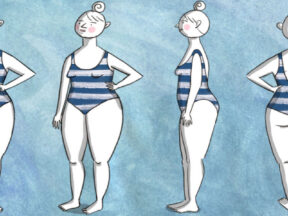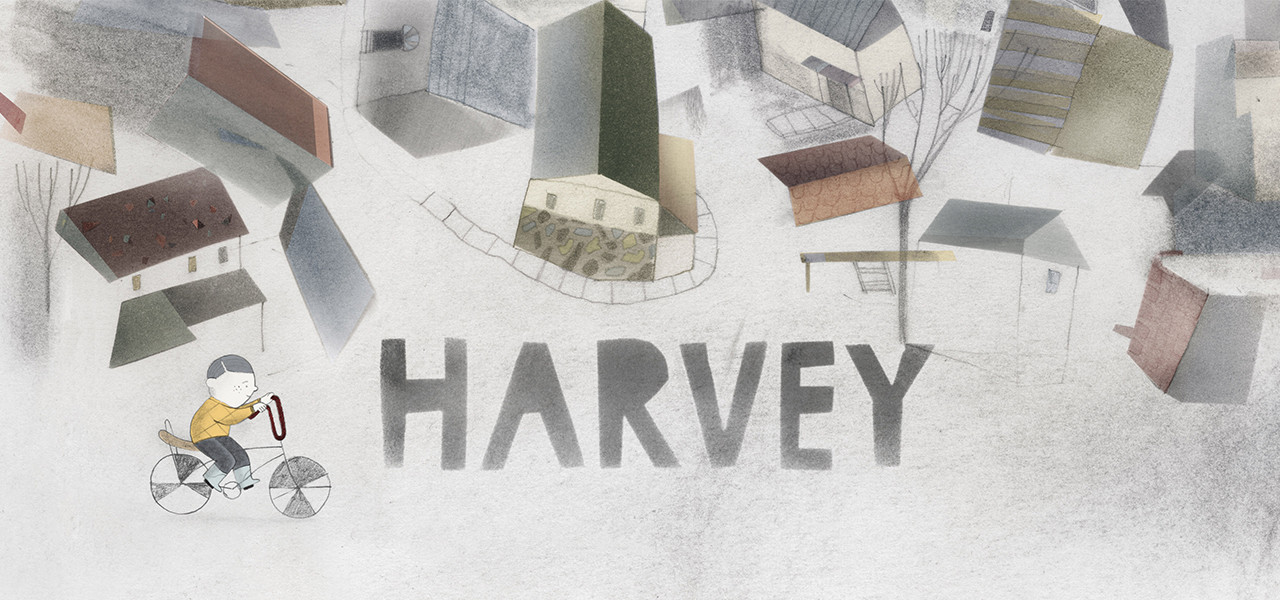
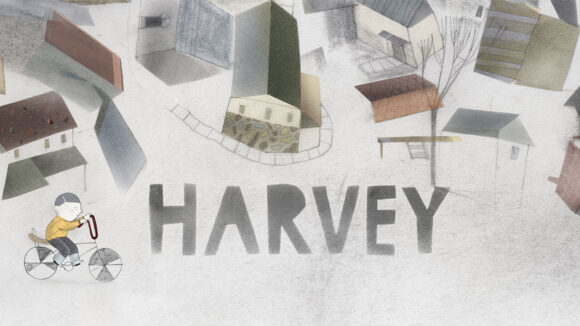
Janice Nadeau’s ‘Harvey’: A Boy Recalls The Spring Day When His World Turned Upside Down
It’s been a whirlwind year for Quebec animator Janice Nadeau since the premiere of her animated short Harvey at the Clermont-Ferrand International Short Film Festival in France.
Since then, her National Film Board of Canada/Folimage co-production has been invited to some 70 international festivals, including Stuttgart, Annecy, Zagreb, and Ottawa, as well as the New York City Short Film Festival, the Newport Beach Film Festival, and the Chicago International Children’s Film Festival, here in the U.S.
Harvey has received eight awards and accolades to date, including best animated short at the New York City Short Film Festival and best international short at the Buenos Aires International Independent Film Festival.
A poetic and imaginative look at bereavement, Harvey tells the story of a young boy who recalls the spring day when his world turned upside down. The film was adapted from a graphic novel written by Hervé Bouchard and illustrated by Nadeau herself.
As Harvey heads to L.A. to screen in competition at the Los Angeles Animation Festival, the NFB spoke with Nadeau about her film.
NFB: What was the idea, the inspiration, for this film?
Nadeau: The starting point was the graphic novel, of course. What prompted me to continue and expand this story into a film is that it was like a house with hundreds of doors. And the feeling that, whichever one I opened, I would find a way to approach it differently. The story it tells is so rich, and so are the themes: family, the invisible bonds between individuals, and the importance of listening to one’s own voice.
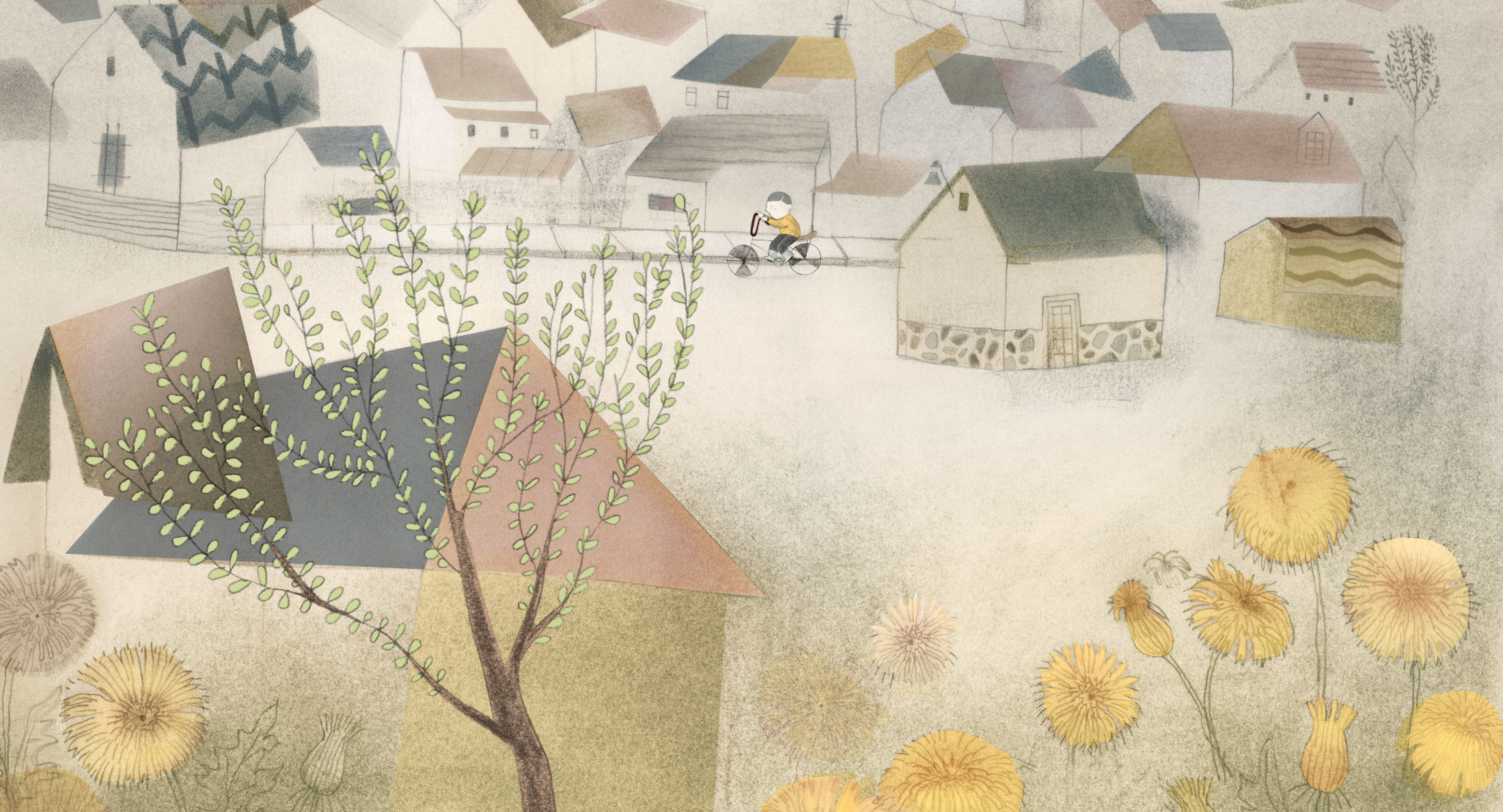
Tell us about your creative process, your particular aesthetic approach.
The film takes place during childhood when the boundary between reality and imagination is easily crossed. The other element is that it happens in the spring. That’s where the aesthetic treatment came from. There are two kinds of spring in the story. The first is when there’s still messy snow on the ground: it melts and becomes mud, slush… That transitional period inspired me; it’s not bright like in summertime; it’s an in-between, an intermediate time. To convey that, I worked in pencil for the animation, and there was a ‘smudging’ step, using charcoal so the line would be imperfect, delicate. We applied the color digitally in just three shades: blue, red, and yellow. There are more saturated colors in the last shot only; this is the second spring.
What’s it like switching from illustration to animation?
As an illustrator, I’m focused on telling a story in a single image. I don’t have to manage time in that image and can add all the details I want. When I’m animating, though, I don’t have access to the final imagery of the film. So, I work in layers. The backgrounds, objects, colors, and characters aren’t created at the same time; these elements get superimposed like the layers of an onion. I can also use images more to unfold the story, using sequences, editing, and storyboarding.
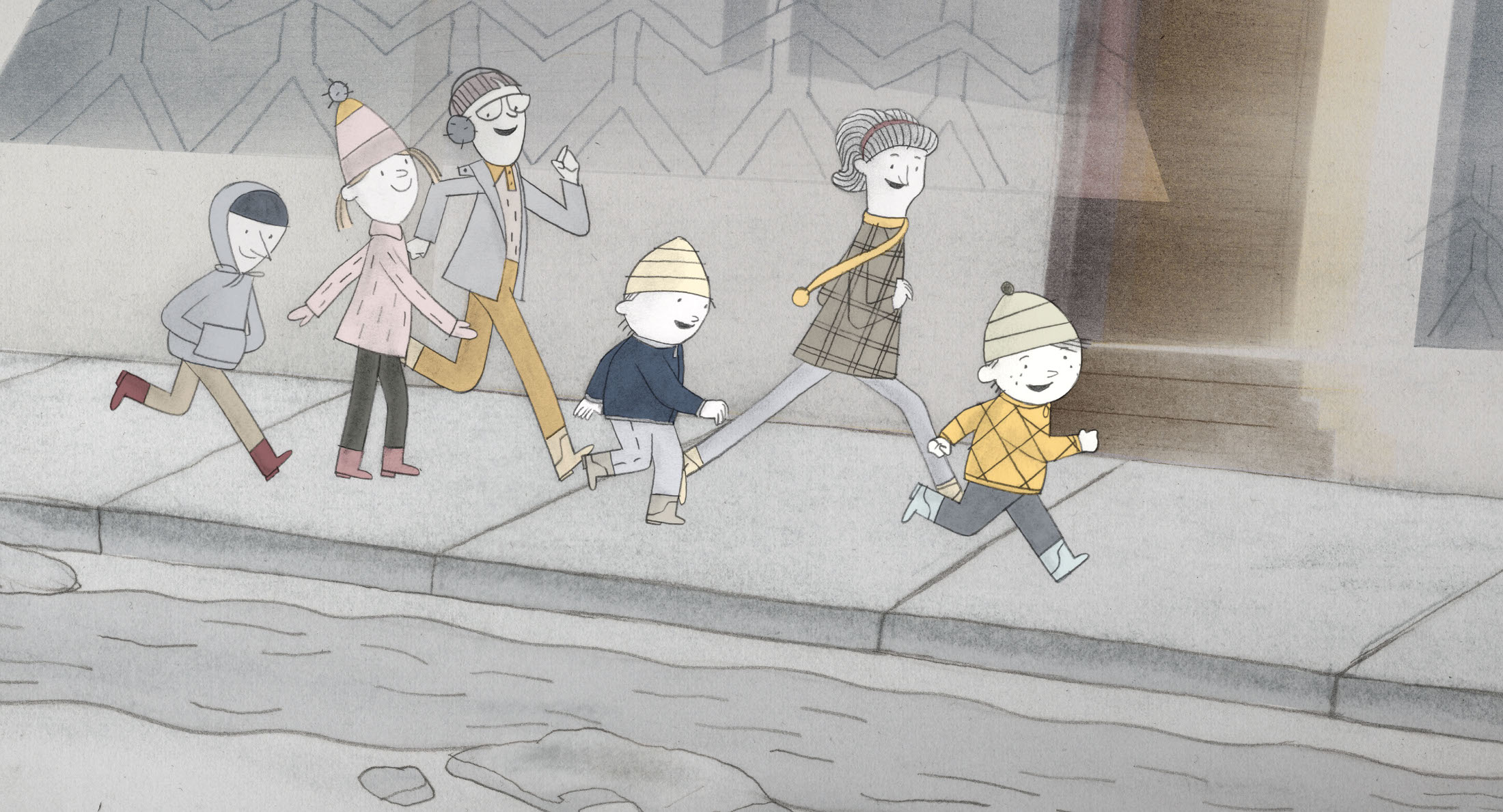
How did you choose a single narrative voice (Harvey’s)?
In the narration of the graphic novel, there’s a convention when Harvey brings in a character. It’s written: “he said,” “my brother said,” etc. I tried to transpose that convention to the script, but it became cumbersome. So, I switched to voices that would be performed by actors, but that didn’t work either. After a lot of research, I went back to the idea of a narrated story. When Harvey tells the story, he does all the voices, even though that’s jarring at times.
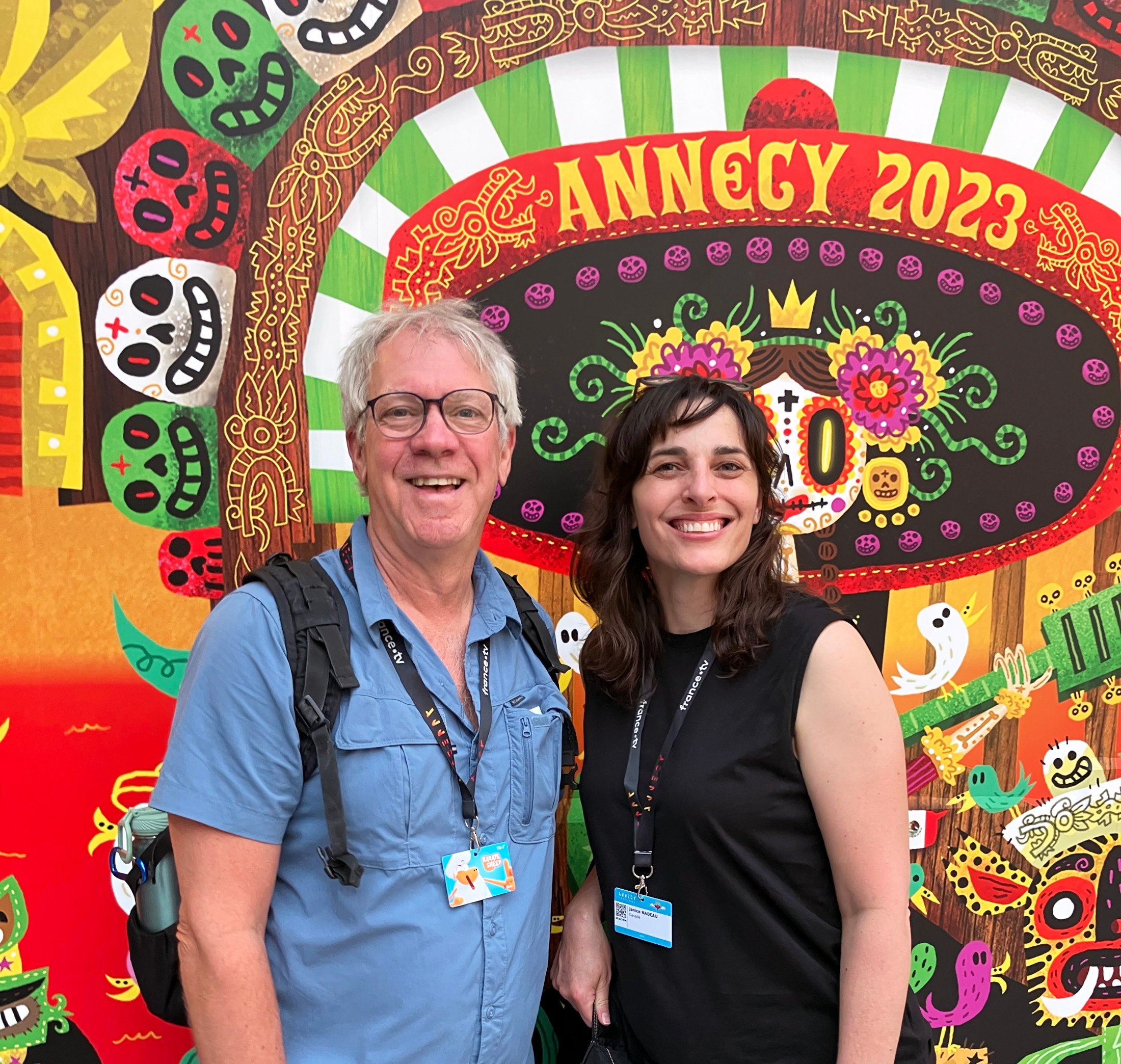
How did the NFB and Folimage enable you to take this project further?
The NFB provides the ideal conditions to create. That’s really the foundation. My producer, Marc Bertrand, has a gift for finding and assembling a brilliant team of collaborators. The team at the French Animation Studio is so efficient and so generous! They put everything in place for the filmmaker to nurture their project. Once the setup and the preparation were complete, Folimage took over for the animation side. This production studio, which has gone digital, went back to something more traditional with Harvey. They assembled a great little team to create part of the film using paper cutout animation, one of their specialties. Here, too, I was provided with solutions, which was a very constructive approach that made for a better film.
Harvey was co-produced by the National Film Board of Canada and Folimage and is an official selection at the Los Angeles Animation Festival (Dec 9–10, 2023).

